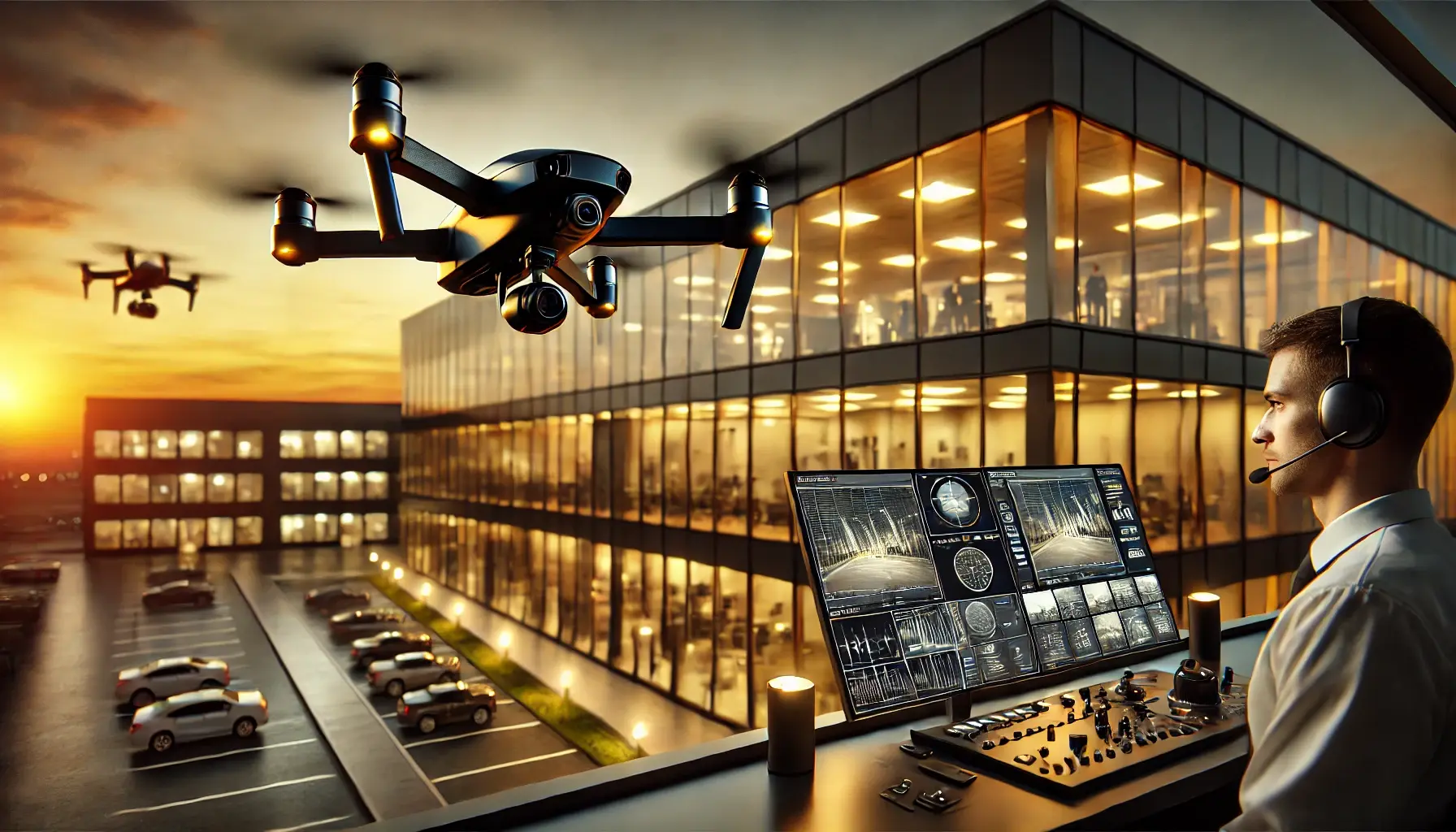Top 5 Security Challenges for Corporate Campuses and How Drones Solve Them
Corporate campuses today face a host of security challenges. As sprawling facilities housing valuable assets, sensitive data, and large populations of employees, these spaces require robust security solutions that adapt to evolving threats. Drone technology has emerged as a game-changing solution, providing advanced surveillance capabilities that traditional security systems simply can’t match. Here are the top five security challenges faced by corporate campuses and how drones provide innovative solutions to tackle them. Need help planning out your corporate campus's aerial drone security?
1. Perimeter Security and Intrusion Detection
The Challenge: Corporate campuses often encompass large areas with multiple entry points. Maintaining the security of these perimeters is critical, but traditional methods such as fixed cameras and on-foot patrols have limitations. Blind spots, delayed response times, and limited coverage are common issues.
The Solution: Drones equipped with advanced surveillance cameras and thermal imaging can provide real-time, aerial monitoring of a campus’s perimeter. Unlike stationary cameras, drones can move dynamically to inspect areas that would otherwise be blind spots. They’re also capable of rapidly responding to alarms, covering vast areas in a fraction of the time it would take for a ground patrol.
Key Features:
-
24/7 aerial patrols.
-
Live video feeds accessible from control rooms.
-
Integration with existing security systems.
2. Threat Identification and Emergency Response
The Challenge: Corporate campuses are vulnerable to a variety of threats, ranging from trespassers to active incidents like theft or vandalism. Quick identification and response are essential to minimize damage and ensure safety.
The Solution: With advanced sensors and AI-powered threat detection, drones can identify unusual activities or unauthorized individuals. They can track intruders in real-time and provide security teams with actionable intelligence to respond effectively. In emergency situations, drones can serve as first responders, delivering real-time visuals to guide decisions before ground teams arrive.
Key Features:
-
AI for pattern recognition and anomaly detection.
-
Rapid deployment to incident locations.
-
Two-way communication capabilities for real-time coordination.
3. Monitoring of Remote or Hard-to-Reach Areas
The Challenge: Large campuses often include parking lots, wooded areas, or other remote spaces that are difficult to monitor consistently. These areas can be hotspots for criminal activity due to their limited visibility and accessibility.
The Solution: Drones excel at monitoring these challenging locations. Equipped with night vision and high-resolution cameras, drones can easily navigate through complex terrains, ensuring no corner of the campus is left unmonitored. Their ability to hover and zoom in on specific areas makes them ideal for surveillance of hard-to-reach spots.
Key Features:
-
Night vision for low-light conditions.
-
High-resolution imaging for detailed surveillance.
-
Long flight times to ensure thorough monitoring.
4. Crowd Management During Events
The Challenge: Corporate campuses often host large-scale events, from conferences to employee gatherings. Managing crowds during these events can be a logistical nightmare, with risks of overcrowding, unauthorized access, or even safety incidents.
The Solution: Drones provide an aerial vantage point, allowing security teams to monitor crowds effectively. They can detect bottlenecks, track movements, and identify unauthorized activities. By providing real-time data, drones help ensure smooth crowd management and quick resolution of potential issues.
Key Features:
-
Real-time aerial footage for crowd control.
-
Automated tracking of crowd density.
-
Integration with PA systems for announcements.
5. Asset Protection and Loss Prevention
The Challenge: Corporate campuses house valuable assets, including proprietary technology, equipment, and intellectual property. Protecting these assets from theft or sabotage is a constant challenge.
The Solution: Drones act as mobile surveillance units, patrolling high-risk areas and detecting unusual activities. Their ability to respond to alarms and track movements in real-time ensures that potential threats are neutralized before they escalate. Additionally, drones equipped with license plate recognition systems can monitor parking lots to prevent vehicle-related thefts.
Key Features:
-
Real-time tracking of individuals and vehicles.
-
License plate recognition.
-
Thermal imaging for asset monitoring at night.
Benefits of Using Drones for Corporate Campus Security
-
Cost Efficiency: Drones reduce the need for large security teams, offering a scalable and cost-effective solution.
-
Comprehensive Coverage: Their mobility ensures no area is left unchecked, providing a level of coverage that traditional systems can’t match.
-
Proactive Security: With AI-powered features, drones can detect and respond to threats before they escalate.
-
Enhanced Data Collection: High-quality video footage and analytics improve overall security operations and decision-making.
-
Eco-Friendly Option: Electric-powered drones are more sustainable than traditional fuel-based patrol vehicles.
How to Implement Drone Security on Your Campus
Step 1: Assess your campus’s unique security needs and identify high-risk areas.
Step 2: Choose drones equipped with the right features, such as thermal imaging, AI-powered threat detection, and live streaming capabilities.
Step 3: Integrate drones with your existing security infrastructure, such as access control systems and surveillance software.
Step 4: Train your security team to operate drones effectively and interpret the data they provide.
Step 5: Regularly review and update your drone security strategy to address evolving threats.
Frequently Asked Questions (FAQs)
Q: Are drones cost-effective for corporate campus security? A: Yes, drones offer significant cost savings by reducing the need for extensive ground patrols and fixed surveillance systems, while providing superior coverage and efficiency.
Q: Can drones operate in all weather conditions? A: Many modern drones are designed to function in a variety of weather conditions, including rain and wind. However, extreme weather may still pose challenges.
Q: How do drones integrate with existing security systems? A: Drones can be integrated with access control systems, alarms, and surveillance software to provide a seamless and comprehensive security solution.
Q: Are drones compliant with privacy regulations? A: Yes, as long as they are operated within the boundaries of local laws and regulations. It is essential to have clear policies in place to address privacy concerns.
Q: What is the range of a typical security drone? A: The range varies depending on the drone model, but many security drones can operate within a range of 3-5 miles.
.png)
.png)
.png)

.png)
.png)

.png)
.png)
.png)
.png)
